In March 1966, the Beatles posed happily with dismembered toys and chunks of raw meat. Why did they make the “butcher cover”?
THE SUNDAY TIMES, 2016
On March 25, 1966, the Beatles arrived at a photographic studio in Chelsea, west London, to have some pictures taken. Ever since the explosion of Beatlemania a few years before, John, Paul, George and Ringo had been photographed thousands of times, so this would have seemed like business as usual; just another day. When they woke up that morning – after attending the premiere of the film Alfie together the night before – they could hardly have expected this to become the most notorious photoshoot they ever did.
The 26-year-old photographer Robert Whitaker had hired the studio that day – on the spacious second floor of a mansion block at 1 The Vale, just off the fashionable King’s Road. He had brought along some props to make things interesting, including some white butchers’ coats, birdcages, children’s dolls, and some bloody raw meat. Some conventional portraits were taken, but things took a surreal turn when the Beatles donned the white coats and interacted with the meat and the dismantled dolls.
What on earth was this? What the hell did they think they were doing, circulating this disgusting picture?
Several weeks later, when Capitol Records prepared to release a “new” Beatles album in America, Yesterday and Today, the company inexplicably passed over the ordinary photographs and chose one of these meat-and-dolls shots for the front of the sleeve. But after it sent out thousands of copies to record-dealers, radio stations, newspapers and magazines, Capitol started receiving some very negative feedback indeed. What on earth was this? What the hell did they think they were doing, circulating this disgusting, sickening picture?
Capitol switched swiftly into damage-limitation mode, asking for the recall of the albums. A statement from the company president, Alan W Livingston, explained: “The original cover, created in England, was intended as ‘pop art’ satire. However, a sampling of public opinion in the United States indicates that the cover design is subject to misinterpretation. For this reason, and to avoid any possible controversy or undeserved harm to the Beatles’ image or reputation, Capitol has chosen to withdraw the LP and substitute a more generally acceptable design.” The new design featured an inoffensive Whitaker shot of the Beatles, dressed in everyday casual gear, with a packing trunk. After the panic, Capitol relaxed when it found it had a hit on its hands: Yesterday and Today went to the top of the US album charts, dislodging Frank Sinatra’s Strangers in the Night album.
One theory is that the Beatles posed for the shot as a protest against the way Capitol was butchering the band’s output
Livingston was dead right when he said the original cover was “subject to misinterpretation”. Ever since the scandal, people have offered a variety of decodings of the infamous “butcher cover”. One popular theory is that the Beatles posed for the shot as a protest against the way Capitol was butchering the band’s output, disrespectfully reassembling tracks, singles and B-sides on “special” American albums. Yesterday and Today was a case in point: it mixed up hits like ‘Day Tripper’ with Rubber Soul tracks like ‘Nowhere Man’ and a sprinkling of songs from the forthcoming Revolver album. Another interpretation explains the image as the Beatles’ protest at the ongoing Vietnam War.
But when I met Bob Whitaker in 2008 to interview him for The Sunday Times, he set the record straight, saying that the whole artistic concept of the shoot was his own. “People can say what they like about butchering albums, and Vietnam and the rest of it,” he said. “It’s absolute bullshit. It was entirely my idea. I had this dream one night about the Beatles being ripped to bits by all these young girls when they came out of a stadium. And then I thought about Moses coming down from Mount Sinai carrying the Ten Commandments. He came upon people worshipping a golden calf, and people were worshipping the Beatles like gods.”
He photographed the Beatles holding an umbilical string of sausages that linked them with a long-haired female model
If Whitaker had had his way, the album cover would have been a more elaborate art work, perhaps a triptych. On the same day, he took photographs of band members with their heads in birdcages, and snapped the Beatles holding an umbilical string of sausages that linked them with a long-haired female model, a “woman giving birth to the concept of the Beatles”.
The Beatles themselves were apparently unaware of Whitaker’s concept. At a press conference in Los Angeles in 1966, when he was asked whose idea the shoot was, Lennon replied: “The photographer’s who took it.” Asked what it was “supposed to mean”, he said: “We never asked him, you know.” Nevertheless, Lennon saw the session as an opportunity to skewer the Beatles’ public image as lovable moptops. “Because, like the naughty boy I am,” he explained on another occasion, “I wanted to break the Beatles’ image then… I don’t like being locked into one game all the time… there we were, supposed to be sort of angels. I wanted to show that we were aware of life, and I really was pushing for that album cover.”
George Harrison had a much lower opinion of the photoshoot. Many years later, he said he thought the concept “was gross, and I also thought it was stupid. Sometimes we all did stupid things thinking it was cool and hip when it was naïve and dumb; and that was one of them.”
Japanese purists objected to the fact that the band would be playing Tokyo’s Budokan, a venue designed for martial arts
Three months after Bob Whitaker shot that cover, he joined the Beatles on their 1966 world tour, taking some wonderful (and much more conventional) photographs of the boys in Japan and the Philippines. But at times, he must have wondered if his nightmare about the Beatles’ dismemberment was about to come true. Japanese purists objected to the fact that the band would be playing Tokyo’s Budokan, a venue specifically designed for martial arts. There were death threats and the authorities stepped up security, which made the band virtual prisoners in their suite at the Tokyo Hilton. (The list of artists who have played this “sacred” hall since then, without so much as a karate chop, includes Bob Dylan, Led Zeppelin, Kiss and Beyoncé.)
At one point, the ever-restless John Lennon escaped from the hotel for a spot of sightseeing. “He snuck out using my name,” said Whitaker, “on the basis, I think, that all white people probably looked the same to the Japanese. He got away with it for a while, but then somebody recognised him and he was dragged back to the hotel.”
Things turned much uglier in the Philippines. After the Beatles landed in Manila on July 3, 1966, the band members were separated from their confused entourage and whisked off to a yacht owned by a Filipino big shot, Don Manolo Elizalde. And at some point, it seems the Beatles’ retinue received an invitation for the band to join Imelda Marcos for a morning reception at Malacanang Palace. The request may have been politely declined, and the Beatles weren’t even informed of it, but the shoe-collecting first lady was certainly expecting them. “They weren’t allowed off that yacht until about 4am, so do you really think they’re going to rush off to have breakfast with Mrs Marcos?” said Whitaker, doing an impression of a big Beatle yawn. In Manila the band rehearsed glumly in cramped, stifling conditions, and then played for tens of thousands of fans with sweat trickling down their faces. “It was very, very humid, and they were nothing like as happy as they were in Japan. But they performed brilliantly there.”
There was complete silence in the first-class cabin. We didn’t know whether we were all going to be slung into prison
When they awoke on July 5, they discovered the Filipino media had made the group public enemies No 1, 2, 3 and 4 for “snubbing” Imelda Marcos. Getting out became the priority. “At the airport we were all jostled, shoved, pushed, and it was ‘Carry your own bags – there’s no porters for you!’ It upset the Beatles a great deal,” said Whitaker. “When we were on the plane waiting to take off, there was complete silence in the first-class cabin. We didn’t know whether we were all going to be dragged off and slung into prison. When the engines started up and we were finally in the air, there was such elation among all of us to get out of that f***-hole.”
After Manila, Bob Whitaker worked on the legendary Oz magazine, took hundreds of pictures of Salvador Dali and the band Cream, and photographed Mick Jagger in Australia, on the set of the 1970 film Ned Kelly. Sadly, Bob died in 2011, at the age of 71. But his stunning photographs of the Beatles continue to appear in exhibitions and do the rounds on social media, and original butcher covers change hands for small fortunes. ♦
Tony Barrell’s acclaimed new book, Beatlemania, is available across the world.
Tony Barrell’s other book, The Beatles on the Roof, is out now in the UK. You can read about it here, and buy it here.
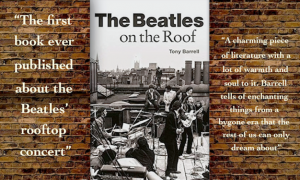
© 2016 Tony Barrell
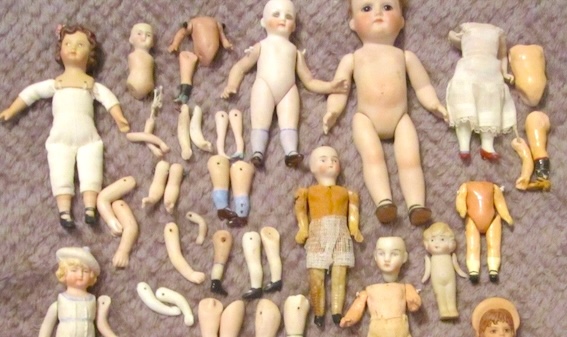
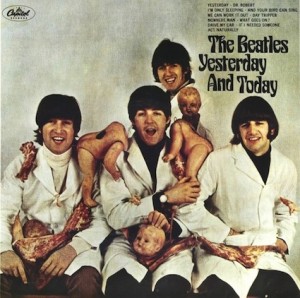
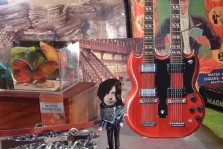
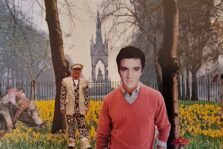
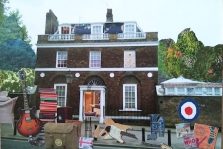
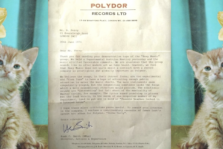
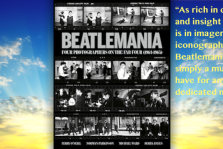
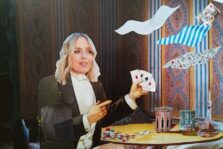
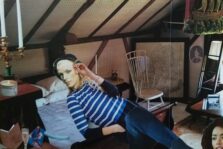

Pingback: Top 10 Rare Valuable and Collectible Vinyl Records